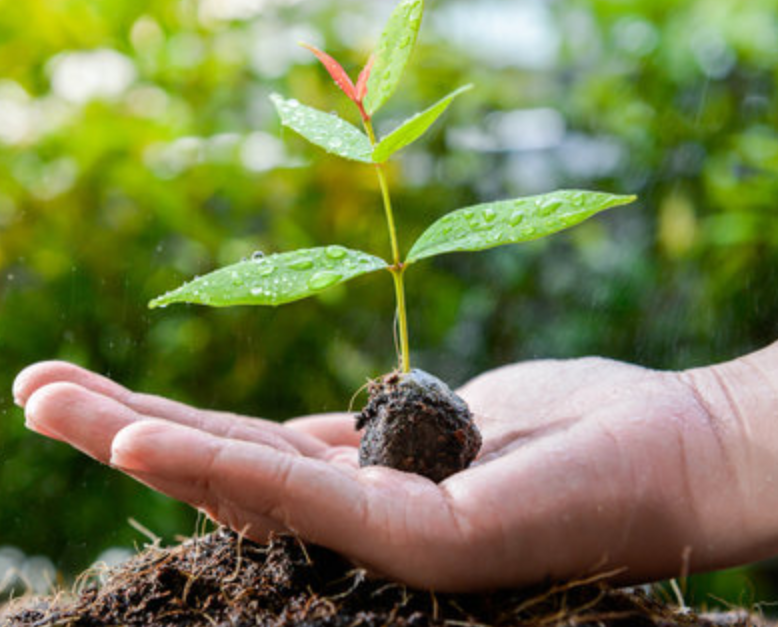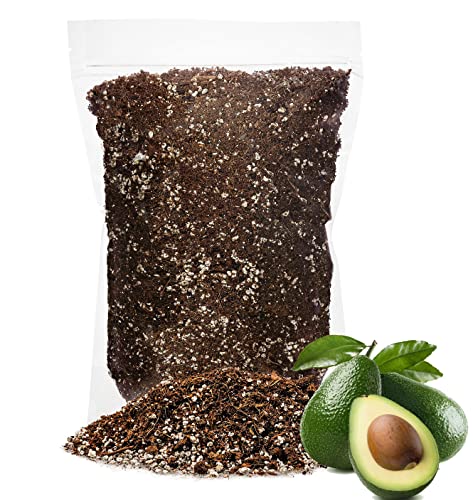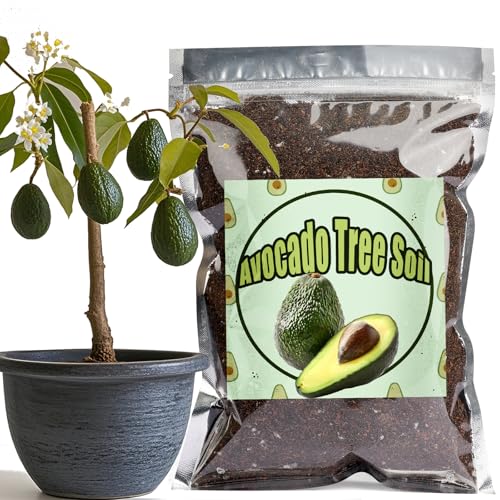
Learn about the best types of soil for avocado trees and how to prepare and care for them to ensure optimal growth and fruit production. Discover tips for planting, watering, fertilizing, pruning, and pest control in this comprehensive guide.
Soil for Avocado Trees
Avocado trees require a specific type of soil to thrive and produce healthy fruit. The ideal soil for avocado trees is well-draining with good water retention and a pH between 6 and 7.5.
Here are some soil types that are suitable for growing avocado trees:
- Loamy Soil: Loamy soil is a mixture of sand, silt, and clay, and it is considered the ideal soil type for avocado trees. It has good water retention and drainage and is easy to work with.
- Sandy Loam: Sandy loam is a mixture of sand and loam with good drainage and water retention. It is easy to work with and provides a good balance of nutrients.
- Volcanic Soil: Volcanic soil is rich in minerals and organic matter and is well-draining. It is found in areas with volcanic activity and is commonly used for growing avocado trees in Hawaii.
- Alluvial Soil: Alluvial soil is rich in organic matter and is found in flood plains or riverbanks. It has good water retention and drainage and is suitable for growing avocado trees.
- Red Clay Soil: Red clay soil is heavy and has good water retention but can become waterlogged and compacted. It is suitable for growing avocado trees if it is amended with organic matter to improve drainage.
It is important to avoid planting avocado trees in heavy clay soil or constantly wet soil. Before planting an avocado tree, it is vital to prepare the soil properly by mixing in compost or other organic matter to improve soil quality and water retention.
By selecting the right type of soil and preparing it properly, you can ensure optimal growth and harvest of your avocado trees.
Soil Preparation
Properly preparing the soil before planting can improve soil quality and ensure optimal plant growth and development.
Here are some tips for soil preparation for growing avocado trees:
- Soil Testing: Conduct a soil test to determine the soil’s pH level and nutrient content. This will help you determine what amendments are needed to optimize soil conditions for avocado trees.
- Site Selection: Select a site with well-draining soil that receives at least six hours of sunlight daily. Avoid areas with heavy clay soil or areas that are prone to flooding.
- Digging: Dig a hole twice the width of the root ball and slightly shallower than the depth of the root ball. Remove any rocks or debris from the hole.
- Amend Soil: Mix in compost or other organic matter to improve soil quality and water retention. This will help ensure the avocado tree has access to the nutrients it needs to grow and develop.
- Fertilizer: Add a slow-release fertilizer to the soil to provide essential nutrients to the avocado tree. Follow the manufacturer’s instructions for application rates and frequency.
- Watering: Water the soil thoroughly before planting the avocado tree to ensure it is moist. After planting, water the tree deeply and regularly to ensure the soil remains moist.
- Mulch: Add a layer of mulch around the base of the avocado tree to retain moisture and suppress weed growth. This will also help regulate soil temperature and prevent erosion.
Following these soil preparation tips ensures that your avocado tree has the best possible growing conditions. This will help ensure that the tree grows healthy and produces bountiful fruit.
Planting
Planting an avocado tree is an exciting step towards growing your fruit. Proper planting techniques can help ensure the tree gets off to a healthy start and establishes strong roots.
Check some tips for planting avocado trees:
- Timing: The best time to plant an avocado tree is in spring after the danger of frost has passed. This will give the tree time to establish its roots before the hot summer months.
- Site Selection: Choose a site with well-draining soil that receives at least six hours of sunlight daily. Avoid areas with heavy clay soil or areas that are prone to flooding.
- Digging: Dig a hole twice the width of the root ball and slightly shallower than the depth of the root ball. Remove any rocks or debris from the hole.
- Positioning: Position the avocado tree in the center of the hole so that the soil level is even with the top of the root ball. Make sure that the graft union is above the soil level.
- Filling: Backfill the hole with soil and gently tamp it down to remove any air pockets. Water the tree thoroughly to settle the soil and remove any remaining air pockets.
- Mulching: Add a layer of mulch around the base of the avocado tree to retain moisture and suppress weed growth. This will also help regulate soil temperature and prevent erosion.
- Staking: If necessary, stake the tree to provide support until it establishes strong roots. Use a sturdy stake and tie it loosely to the tree trunk.
Care
Proper care of avocado trees is essential for maintaining healthy growth and optimal fruit production.
Tips for caring for avocado trees:
- Watering: Avocado trees require consistent watering, especially during the growing season. Water the tree deeply once a week, and adjust the frequency based on weather conditions. Make sure not to overwater, as this can lead to root rot.
- Fertilizing: Avocado trees require regular fertilization to ensure that they have access to the nutrients they need. Apply a balanced fertilizer in the spring and fall, following the manufacturer’s instructions for application rates and frequency.
- Pruning: Prune the avocado tree regularly to maintain its shape and encourage new growth. Remove any dead or damaged branches, and thin out the canopy to allow for better air circulation.
- Pest Control: Monitor the avocado tree for signs of pests, such as scale or mites. Use insecticidal soap or horticultural oil to control infestations, following the manufacturer’s instructions for application rates and frequency.
- Disease Control: Watch for signs of disease, such as root rot or anthracnose. Ensure that the soil drains well and avoid overwatering. If necessary, use a fungicide to control the disease, following the manufacturer’s instructions for application rates and frequency.
- Harvesting: Avocado fruit can take up to a year to mature, depending on the variety. Harvest the fruit when it is fully mature but not overripe. The fruit should be firm and dark green or black.
FAQS
How long does it take for an avocado tree to bear fruit?
It can take 3-4 years for an avocado tree to bear fruit, but it can take up to 10 years to reach peak production.
What is the best time to plant an avocado tree?
The best time to plant an avocado tree is in the spring after the danger of frost has passed.
How often should I water my avocado tree?
Avocado trees should be watered deeply once a week during the growing season, and the frequency should be adjusted based on weather conditions.
Can I grow an avocado tree in a pot?
Yes, avocado trees can be grown in pots, but they must be regularly pruned and repotted as they grow.
How much sunlight does an avocado tree need?
Avocado trees need at least six hours of direct sunlight daily to grow and produce fruit.
Do avocado trees need fertilizer?
Yes, avocado trees require regular fertilization to ensure that they have access to the nutrients they need. Apply a balanced fertilizer in the spring and fall.
Can I grow an avocado tree from a seed?
Yes, avocado trees can be grown from seeds, but it can take several years for the tree to bear fruit.
How do I prune an avocado tree?
Prune the avocado tree regularly to maintain its shape and encourage new growth. Remove dead or damaged branches, and thin out the canopy for better air circulation.
What pests and diseases can affect avocado trees?
Avocado trees can be affected by pests such as scale or mites and conditions such as root rot or anthracnose.
10. How do I know when an avocado is ready to harvest?
Avocado fruit can take up to a year to mature, depending on the variety. Harvest the fruit when it is fully mature but not overripe. The fruit should be firm and dark green or black.
Conclusion:
Growing avocado trees can be a rewarding and exciting experience, whether you’re planting a young seedling or caring for a mature tree. To ensure good growth and healthy fruit production, choosing the right soil environment for your avocado plant is crucial.
Whether growing avocados in a pot, outdoors in a garden or in a tropical region, understanding the right combination of soil ingredients is critical. The right mix of organic materials, such as forest humus, peat moss, and coconut coir, as well as natural nutrients, such as crab meal, bat guano, and fish meal, can encourage root spread and moisture retention.
To prevent root rot and fungus growth, it is vital to ensure good drainage and moisture control for young trees with shallow roots. Mature trees with larger fruit require extra care and protection from excess water and salt in the soil.
Whether you choose a specially formulated potting mix, all-purpose fertilizer, or natural ingredients like earthworm castings and decomposed granite, the key to success in growing avocados is to provide the right soil environment, good drainage, and full sun.
In addition to soil preparation and care, it is essential to consider container tree considerations if you are growing an avocado tree in a pot. Choosing a container with drainage holes and a granular texture potting soil with a wetting agent can help ensure good drainage and moisture control.
Larger containers with extra space for the root system can provide more room for growth and fuller plants. To ensure good growth, it is important to transplant young seedlings into larger containers every few weeks.
Synthetic fertilizers and chemicals should be avoided to preserve the natural nutrients in the soil, and all-natural products such as Black Gold or Miracle-Gro can be used instead. With extra care and attention, your avocado plant can thrive and produce large, delicious fruits perfect for salads, dips, and more.
Whether growing avocados in your garden space or in containers indoors, the right soil environment and good drainage can help ensure success and a bountiful crop.
Last update on 2024-11-21 / Affiliate links / Images from Amazon Product Advertising API






























